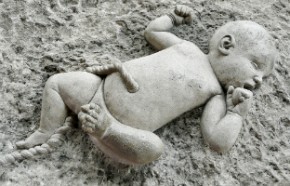Hope for hurting bodies
The story goes that God got a body. I’ve often pondered the relationship between incarnation and pain.

Years ago, I encountered a graphic crucifix in an old Mexican church. It was too kitschy to elicit holy horror; the gashes on Christ’s face and body looked more cartoonish than redemptive. I am glad I never pushed the image from my mind, though. It has become for me a sort of icon of the banality of pain—even divine pain. For all the competing theories of atonement, there is a singular fact about the crucifixion: it hurt like hell.
I was still in elementary school the first time I woke up with a stiff neck, and I have grappled with bouts of severe neck and back pain ever since. When I was 22, a chiropractor glanced at my X-ray and told me I had the spine of a middle-aged man. I’ve sprained my back by carrying an amplifier and lifting a canoe. I’ve suffered through postpartum spasms that were worse than actual childbirth. Once I ended up on bed rest for days because I sneezed wrong. I’ve seen physical therapists and pain specialists, gotten monthly massages and an inconclusive MRI. I’ve swallowed painkillers so strong I couldn’t hold them down, and I’ve fretted about whether doctors will think I’m an addict if I appear too desperate for Demerol.
In her classic essay on migraines—another excruciating and mysterious affliction—Joan Didion remarks, “That no one dies of migraine seems, to someone deep into an attack, an ambiguous blessing.” There have been times when I could almost consent to this terrible sentiment. When the pain comes, the only thing I want—the only thing I am capable of wanting, it seems—is for it to leave.





